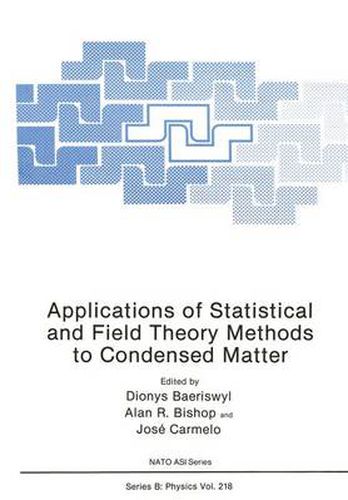Readings Newsletter
Become a Readings Member to make your shopping experience even easier.
Sign in or sign up for free!
You’re not far away from qualifying for FREE standard shipping within Australia
You’ve qualified for FREE standard shipping within Australia
The cart is loading…






There is no doubt that we have, during the last decade, moved into a golden age of condensed matter science. The sequence of discoveries of novel new states of matter and their rapid assimilation into experimental and theoretical research, as well as devices, has been remarkable. To name but a few: spin glasses; incommensurate, fractal, quasicrystal structures; synthetic metals; quantum well fabrication; fractional quantum Hall effect: solid state chaos; heavy fermions; and most spectacularly high-temperature superconductivity. This rapid evolution has been marked by the need to address the reality of materials in extreme conditions - - disordered, nonlinear systems in reduced dimensions, restricted geometries and at mesoscopic scales, often with striking competitions between several length and frequency scales, and between strong electron-phonon and electron-electron interactions. In such new territory it is not surprising that very interdisciplinary approaches are being explored and traditional boundaries between subjects and disciplines re-defined. In theory, this is evident, for instance, in attempts: (1) to advance the state of the art for elec tronic structure calculations so as to handle strongly interacting many-body systems and delicate competitions for collective ground states (spin models or many-electron Hamiltoni ans, field theory, band structure, quantum chemistry and numerical approaches); or (2) to understand pattern formation and complex (including chaotic) dynamics in extended sys tems. This demands close involvement with applied mathematics, numerical simulations and statistical mechanics techniques.
$9.00 standard shipping within Australia
FREE standard shipping within Australia for orders over $100.00
Express & International shipping calculated at checkout
Stock availability can be subject to change without notice. We recommend calling the shop or contacting our online team to check availability of low stock items. Please see our Shopping Online page for more details.
There is no doubt that we have, during the last decade, moved into a golden age of condensed matter science. The sequence of discoveries of novel new states of matter and their rapid assimilation into experimental and theoretical research, as well as devices, has been remarkable. To name but a few: spin glasses; incommensurate, fractal, quasicrystal structures; synthetic metals; quantum well fabrication; fractional quantum Hall effect: solid state chaos; heavy fermions; and most spectacularly high-temperature superconductivity. This rapid evolution has been marked by the need to address the reality of materials in extreme conditions - - disordered, nonlinear systems in reduced dimensions, restricted geometries and at mesoscopic scales, often with striking competitions between several length and frequency scales, and between strong electron-phonon and electron-electron interactions. In such new territory it is not surprising that very interdisciplinary approaches are being explored and traditional boundaries between subjects and disciplines re-defined. In theory, this is evident, for instance, in attempts: (1) to advance the state of the art for elec tronic structure calculations so as to handle strongly interacting many-body systems and delicate competitions for collective ground states (spin models or many-electron Hamiltoni ans, field theory, band structure, quantum chemistry and numerical approaches); or (2) to understand pattern formation and complex (including chaotic) dynamics in extended sys tems. This demands close involvement with applied mathematics, numerical simulations and statistical mechanics techniques.